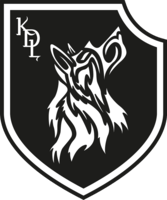The mating season, what a beautiful and exhilarating time for wolves.
Our precious Alpha will court each other with infinite tenderness at the end of winter. The rituals of our lovers are expressive and loquacious. Kisses and fleeting licks on the cheeks, ears, and more if inclined. The female wolf rubs against the male, places her paws on his back or head on his shoulders. They sleep closer to each other, often move together, and howl together. Why during this late winter period?
Wolf reproduction is influenced by the photoperiod* and is strictly seasonal
Male and female wolves exhibit a peak in reproductive ability between December and March
Effects and behaviors:
In male wolves reaching sexual maturity between 22 and 46 months, this is marked by an increase in testicle and scrotum* size as the days lengthen and an increase in testosterone production. During the mating period, the alpha male becomes more aggressive and increases territory marking frequency. He vigorously defends his place and constantly intervenes.
In female wolves reaching sexual maturity around 22 months, this is marked by vulvar swelling and blood flow. They are monocyclic, with one estrus* per year, giving them only one opportunity to reproduce annually. The physiological cause of this monoestrous condition is the lengthening of ovulatory cycle periods, including a six-week proestrus and one week of estrus. To prevent other females from mating, the alpha female exerts such powerful psychological pressure that the estrus of other females in the pack is blocked.
When about to copulate, formed pairs often move away from the pack for a few days to avoid interference from other pack members, who may sometimes come to harass them, as the couple becomes the center of attraction.
The couple engages in a nuptial ritual that includes appeasement signals. It involves playful sexual behavior, chasing games, vocalizations, rolling on the ground, sniffing genital regions, nasal contact, and reciprocal licking. Both partners engage in double marking, usually initiated by the female. This latency period before mating promotes the awakening of sexual instincts and prepares the genitals for copulation.
Copulation lasts between 15 to 30 minutes, during which our two animals remain attached to each other, a phenomenon caused by gland swelling and vaginal sphincter* contraction. Ejaculation occurs during penetration and the attachment phase. It appears that the chances of conception are increased by the time spent together during proestrus. The relatively long duration of estrus also allows for more copulations, compensating for the risks associated with monoestrous condition.
When the mating period is over, the wolves in the pack resume a friendly attitude toward each other
Everyone invests in searching for and preparing the den that will welcome the mother and her pups. The continuation of this topic will be in April…
*Photoperiod refers to the ratio of day length to night length, influencing many physiological and ecological activities, such as reproduction and flowering.
*The scrotum is located between the thighs and has a spherical to ovoid shape, like that of testicles.
*Estrus is the period during which a female mammal is fertile.
*Proestrus is the beginning of the heat cycle.
*Sphincter: a muscle that controls the opening and closing of a natural orifice.
Artificial intelligence translation of an original text by Sandrine Devienne.
Click here to read the French version

